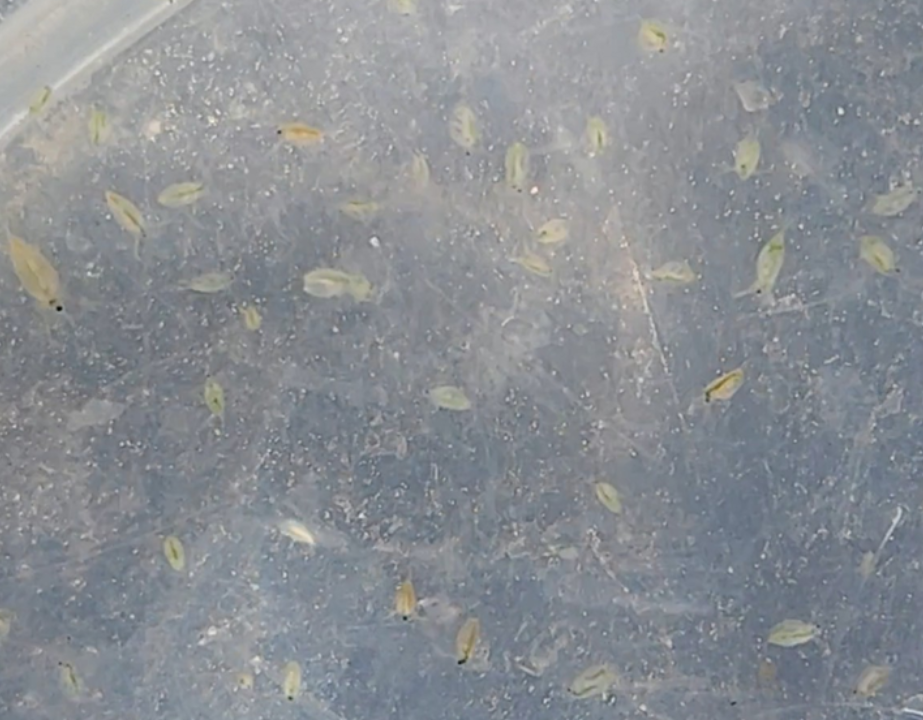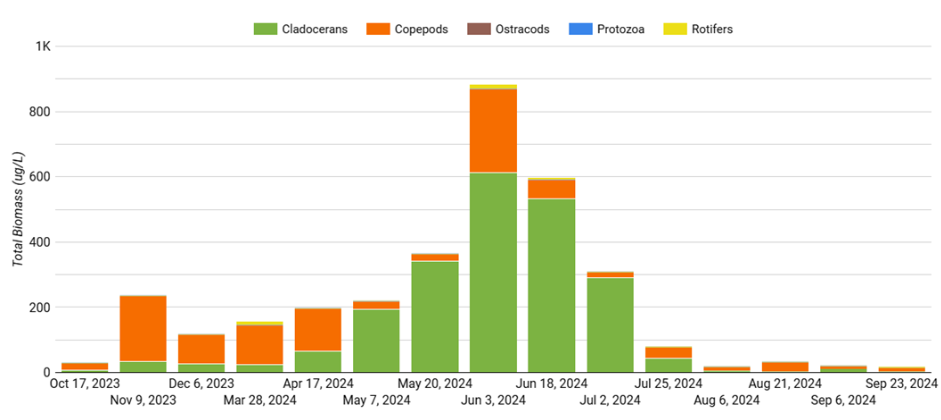Zooplankton
Highlights:
High zooplankton numbers and biomass in mid June coincided with very low phytoplankton abundance and biovolume and conversely low zooplankton populations in late July coincided with peak phytoplankton populations, supporting that zooplankton grazing impacts phytoplankton abundance in Cherry Creek Reservoir.

Zooplankton are important in the biological balance of Cherry Creek Reservoir as they serve as the primary food source for small fish and many feed on algae. Zooplankton population dynamics and activity are also affected by water quality and the water clarity can impact ability to feed. Larger zooplankton can exert significant grazing pressure on algal cells; however, they are also subject to predation as they are a food source for larger crustaceans, aquatic insects and fish.
Most freshwater zooplankton are part of only three phyla: amphipods, which include both cladocerans (shown in green) and copepods (shown in orange); rotifers (shown in yellow); and protozoa (shown in blue). Cladocerans and copepods are microscopic crustaceans that feed primarily on phytoplankton. These organisms can be an important food source for fish and can also exert grazing pressure on phytoplankton populations when present in high enough numbers. Rotifers are microscopic animals that feed on detritus and smaller organisms, such as bacteria. They can also serve as a food source for larger zooplankton. Protozoans are single-celled organisms that feed on other microorganisms, organic matter, and debris.
There was a major zooplankton bloom in early June that was primarily made up of daphnia which are large bodied cladocerans which are not frequently observed in Cherry Creek Reservoir but provide a great food source for small fish. During this unusual bloom, dense populations of daphnia could be observed with the naked eye in the marina and common carp were observed feeding on them.
Both the elevated zooplankton and corresponding low phytoplankton in June and the notable drop in zooplankton which coincided with peak phytoplankton in late July, suggests zooplankton grazing can reduced phytoplankton abundance in Cherry Creek Reservoir.
The invasive water flea, daphnia lumholtzi, a type of cladoceran, is less palatable to fish due to its spines and has been detected in samples 2011. These species are less desirable than other large body daphnia which are an important food source for fish.
Useful Links

WY 2024 Total Zooplankton Biomass

Elevated biomass in early June was when the bloom was observed in the marina - picture above
